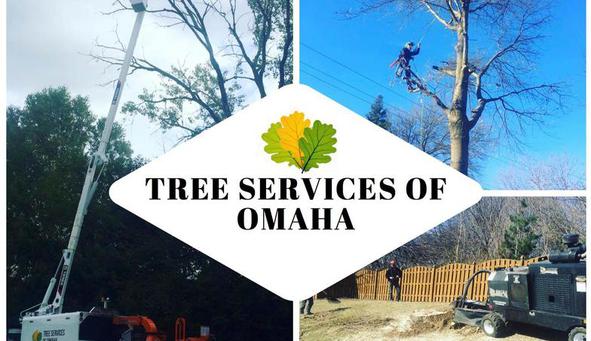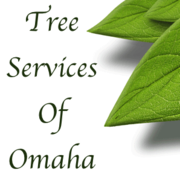Tree Services of Omaha - Omaha, Nebraska
Tree Leaf Miner Control
by David Steg on 10/01/14
While not usually threatening to plants, leafminer control is often necessary to manage the highly visible tunnels in leaves that can reduce crop value.
Description
Found in greenhouses, home gardens and landscaped areas across the country, leafminers are the larval (maggot) stage of an insect family that feeds between the upper and lower surfaces of leaves. On heavily infested plants it is not uncommon to find 6 or more maggots per leaf. Although damage can restrict plant growth, resulting in reduced yields and loss of vigor, healthy plants can tolerate considerable injury. Host plants include beans, blackberries, cabbage, lettuce, peppers, and a variety of ornamental flowers, trees and shrubs.
Adults (1/10 inch long) are often black to gray flies with yellow stripes and clear wings. They are similar in appearance to small, hunched-back house flies and lay their eggs on the undersides of leaves. Larvae are worm-like maggots (1/3 inch) which are often pale yellow or green in color. They create winding tunnels that are clear, except for the trail of black fecal material (frass) left behind as they feed.
Note: In some cases, pathogenic fungi and bacteria may enter old mines left from eradicated insects. This can cause leaves to turn yellow and drop.
Life Cycle
Mature larvae overwinter in the soil under host plants. As temperatures warm in the spring larvae pass to the pupal stage and appear as young adults in late April. Mated females use their needle-like ovipositor to lay up to 250 eggs just under the surface of the leaf epidermis. Deposited eggs may appear as small raised spots on the leaf. Within 10 days hatching larvae tunnel through the mid-leaf tissue, feeding as they go and leaving tell-tale wavy lines that are visible on the surface. Larvae mature in 2-3 weeks, and when ready to pupate, leave the leaf and drop to the soil. Once on the ground, they dig 1-2 inches into the soil and pupate. Adults emerge within 15 days as adult flies. There are several generations per year.
Damage
Various types of leafminers attack various kinds of plants. They’re found on broadleaf trees, including elm, aspen, hawthorn, and poplar as well as shrubs and bushes, including lilacs. Damage can be limited in initial stages of infestations but increase as leafminer numbers multiply, and even minor infestations, while not killing a plant, will cripple its hardiness. Leafminers are a major cause of poor harvest numbers in home gardens as they weaken individual vegetable plants. They’re especially fond of spinach leaves and their tunneling severely decreases the attractiveness and value of the crop.
Leafminer Control
Natural, and organic control methods work best when fighting leafminer problems. That’s because they don’t harm the naturally occurring beneficial insect populations that largely keep the leafminer and other harmful pests under control. While pesticide use can encourage leafminer outbreaks, natural controls andbeneficial insects prevent as well as cure these pest problems. Don’t wait until you spot leafminer tunnels in your plants’ leaves, especially if you’ve had problems with them in the past. Be prepared with the products you’ll need to prevent and destroy infestations. Then stay vigilant.
- Monitor plant leaves closely. At the first sign of tunneling, squeeze the leaf at the tunnel between two fingers to crush any larvae. Done soon enough, this killing larvae can allow plants to survive minor outbreaks. Pick off and destroy badly infested leaves in small gardens.
- The more healthy the plant, the less chance that leafminers will hurt it. Maintain plant health withorganic fertilizers and proper watering to allow plants to outgrow and tolerate pest damage. Keep your soil alive by using compost and other soil amendments.
- Use floating row covers to prevent fly stage from laying eggs on leaves.
- The parasitic wasp Diglyphus isaea is a commercially available beneficial insect that will kill leafminer larva in the mine. The wasp is especially beneficial to indoor growers of ornamentals and vegetables.
- Use yellow sticky traps to catch egg laying adults. Cover soil under infested plants with plastic mulches to prevent larvae from reaching the ground and pupating.
- Organic neem oil will break the pests’ life-cycle by preventing larva from reaching maturity. Neem oilmay also have repellent qualities and interfere with egg laying activities.
- Botanical insecticides can be used to knock down adult insects but have little effect on the protected larval stage feeding inside the leaf.
Note: Pest outbreaks often occur after general pesticide applications. This is because many of the pest’s natural enemies are affected by the pesticide.




